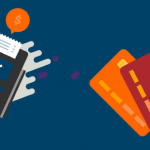Smartphones (and to a lesser degree tablets) have led something of a charmed life over last decade or more; in as much as they have rarely been the primary target of cyber criminals and computer hackers. Cyber fraud and malicious software were fairly common for desktop computers and laptops, but by and large mobile devices seemed to fly under the radar of high tech criminals. Unfortunately, those days are gone, and the last few years have seen a significant rise in cybercrimes targeting mobile devices. Today, it’s not uncommon for smartphones to be hacked, or for mobiles and tablets to become infected with all manner of potentially dangerous malware. The latest viral threat to make the jump from traditional computers to mobile devices is ransomware, and it’s beginning to rear its ugly head throughout the UK and Western Europe.
What Is Ransomware?
If you’ve never fallen prey to a ransomware attack, you can count yourself lucky. Ransomware is a particularly nasty piece of malware that infects your device after you click on a link or email attachment, or when you visit a website seeded with the malicious software. Once your devices infected, cyber criminals can use the malware to lock down your hard drive and encrypt all of your data files, rendering your smartphone or tablet essentially useless. However, for a not so modest fee (anywhere from £150 to £350) the hackers will send you a code to unlock your device, remove the encryption from your files, and return your device to working order. The unlocking fee is typically paid using bitcoin, as it is harder to trace and provides a degree of anonymity and safety for the criminals.
Protecting Yourself from Ransomware
Protecting yourself from a ransomware attack is easier said than done. Naturally, avoiding suspicious links and questionable email attachments is a good start, but sometimes even that is not enough. Savvy cyber criminals often embed the malware in websites, and not just the dodgy ones. Even websites with solid security can be infiltrated by clever and determined cyber criminals. Moreover, hackers are continually rewriting the malware, making it next to impossible for the majority of anti-virus programs to offer any real protection.
The only true way to protect yourself, and your device, from ransomware is to continually back up your files and data to a system that is not connected to your smartphone or tablet. Even some cloud based storage systems, like Google Drive or DropBox, can be compromised, so you need to back up your files to a system that is wholly independent of your device so they can be retrieved at a later date.
What to Do When Ransomware Strikes
If your smartphone or tablet becomes infected with ransomware there are some solutions; however none of them are ideal. First, you can pay the ransom and hope that the hackers send you the decryption codes. This is far from an ideal solution, and there’s no guarantee that you will even receive the codes or that the malware will be removed from your device. It is important to remember that ransomware can lay dormant for months, to be activated (or reactivated) at any time.
Barring paying the ransom, the best solution is a total wipe of your device with a full system restore. This will remove the malware, but it will also remove all of your data and files which is why it is so important to back everything up to an independent storage system. Once the device is restored to factory default, the files can be retrieved and loaded back into your smartphone or tablet. Again, not ideal but it beats paying the ransom or replacing the device.
Free Ransomware Recovery
It’s worth noting that ransomware attacks do not happen in a vacuum, and security experts are always working on ways to crack the criminal’s code. Just last year Cryptolocker (one of the earliest forms of ransomware) infected some 500,000 Windows computers, and security analysts were able to crack the code and offer free recovery to the victims of the attack. However, the free codes did not work for everyone, and some victims were faced with either paying the ransom or replacing their computer.
It’s also worth mentioning that some sites offering free ransomware recovery may not be what they claim. Because your primary computer or smartphone is locked, you will have to use another device to access the so-called ‘free’ recovery, and that gives criminals an opportunity to deploy malware onto yet another device. So, if you’re a victim of ransomware, tread carefully when it comes to any so-called ‘free’ recovery solutions.
Now that smartphones and tablets carry so much of our vital personal data, they have become prime targets for hackers and cyber criminals. Viral attacks on mobile devices are on the rise, and ransomware is becoming particularly popular with high tech fraudsters. Just this year the UK and the EU has seen a spate of ransomware attacks, with the return of Cryptolocker and the appearance of Los Pollos Hermanos.
The days when mobile devices were all but ignored by cyber criminals are gone, and your smartphone and tablet are now just as vulnerable as your home computer or laptop. The time has come to be more mindful of mobile security, and to take steps to protect our devices and our personal data from crafty cyber criminals.
















